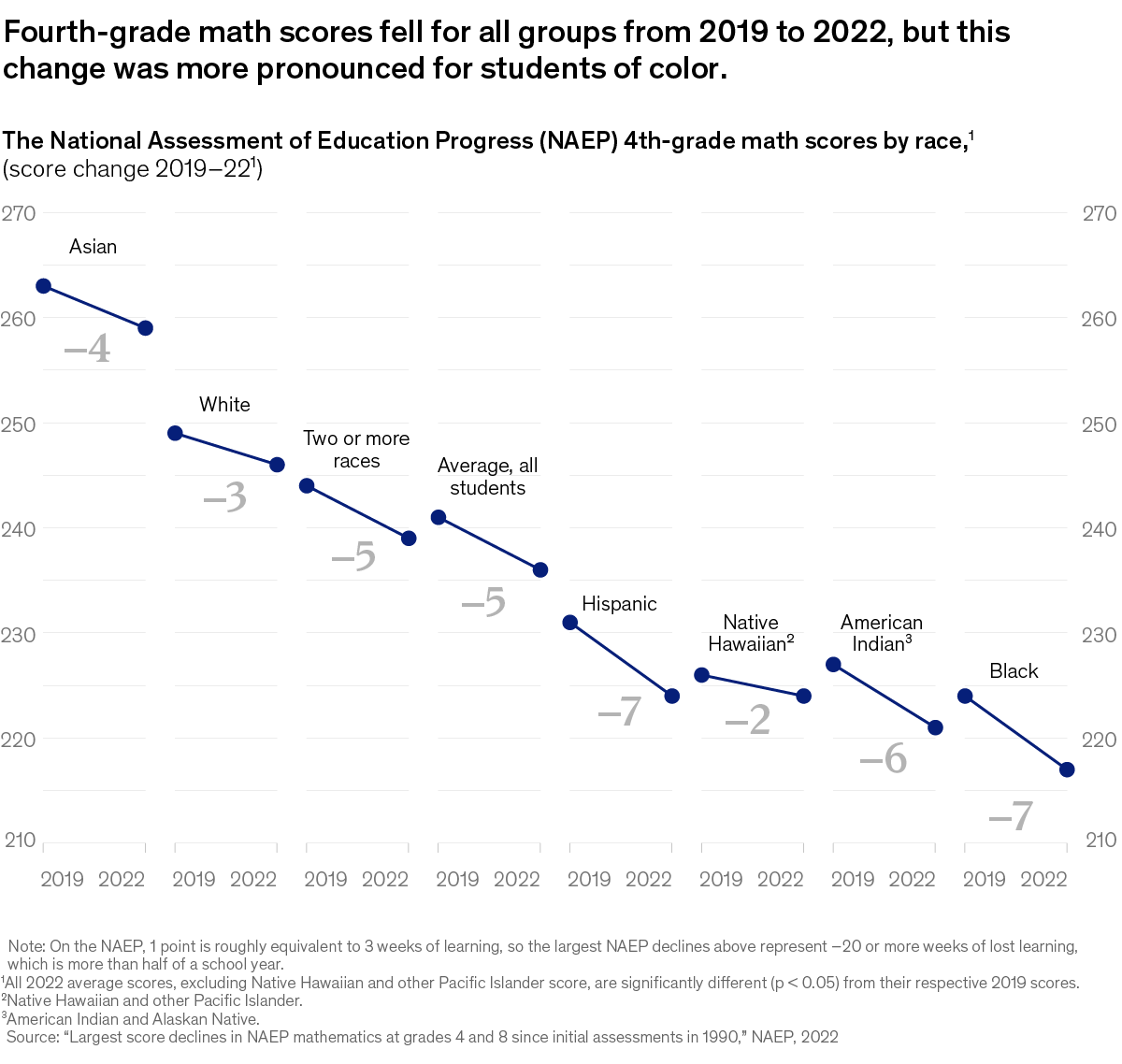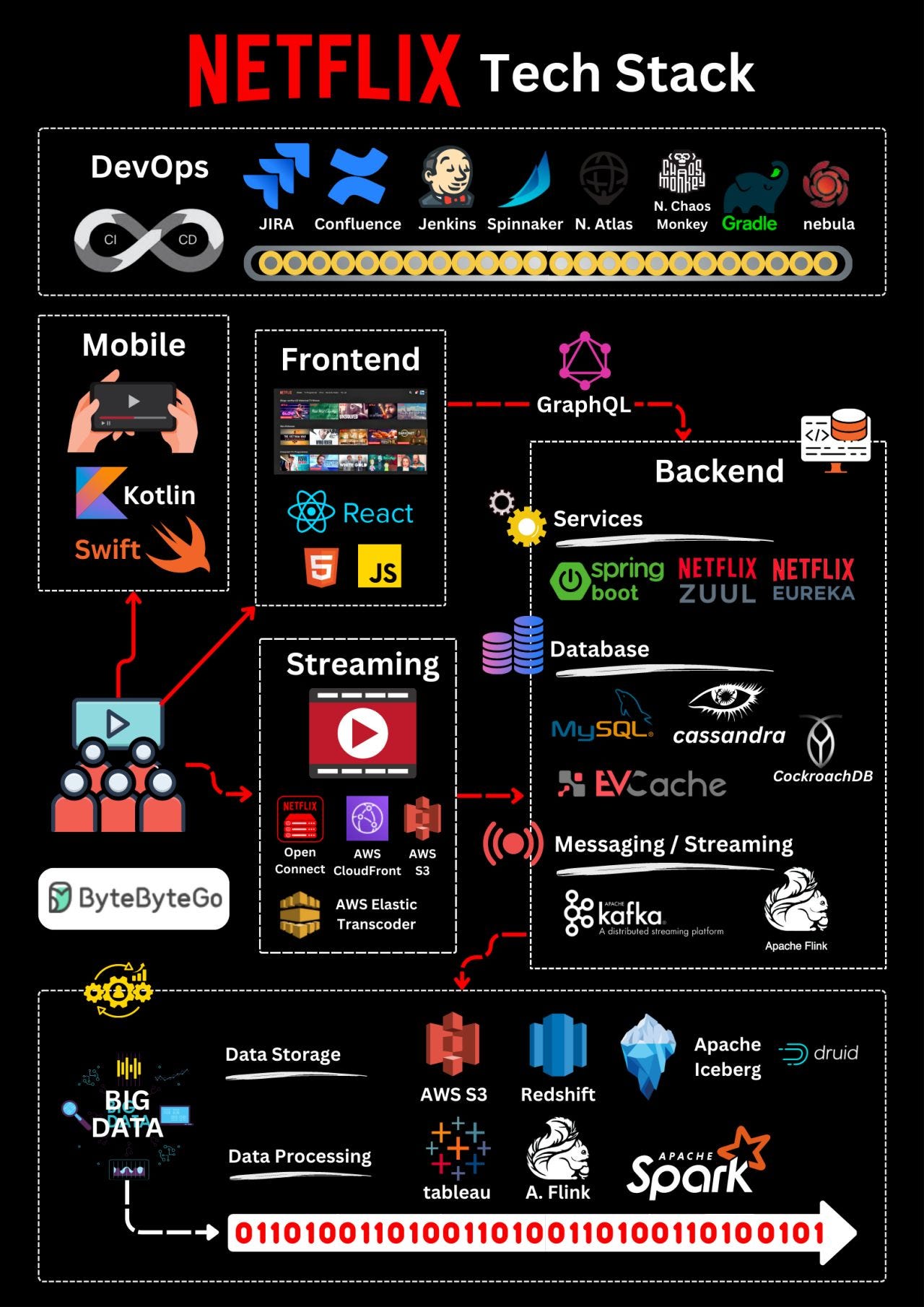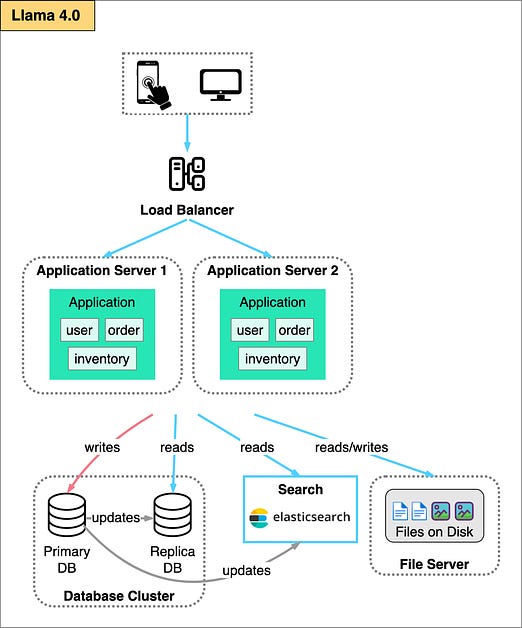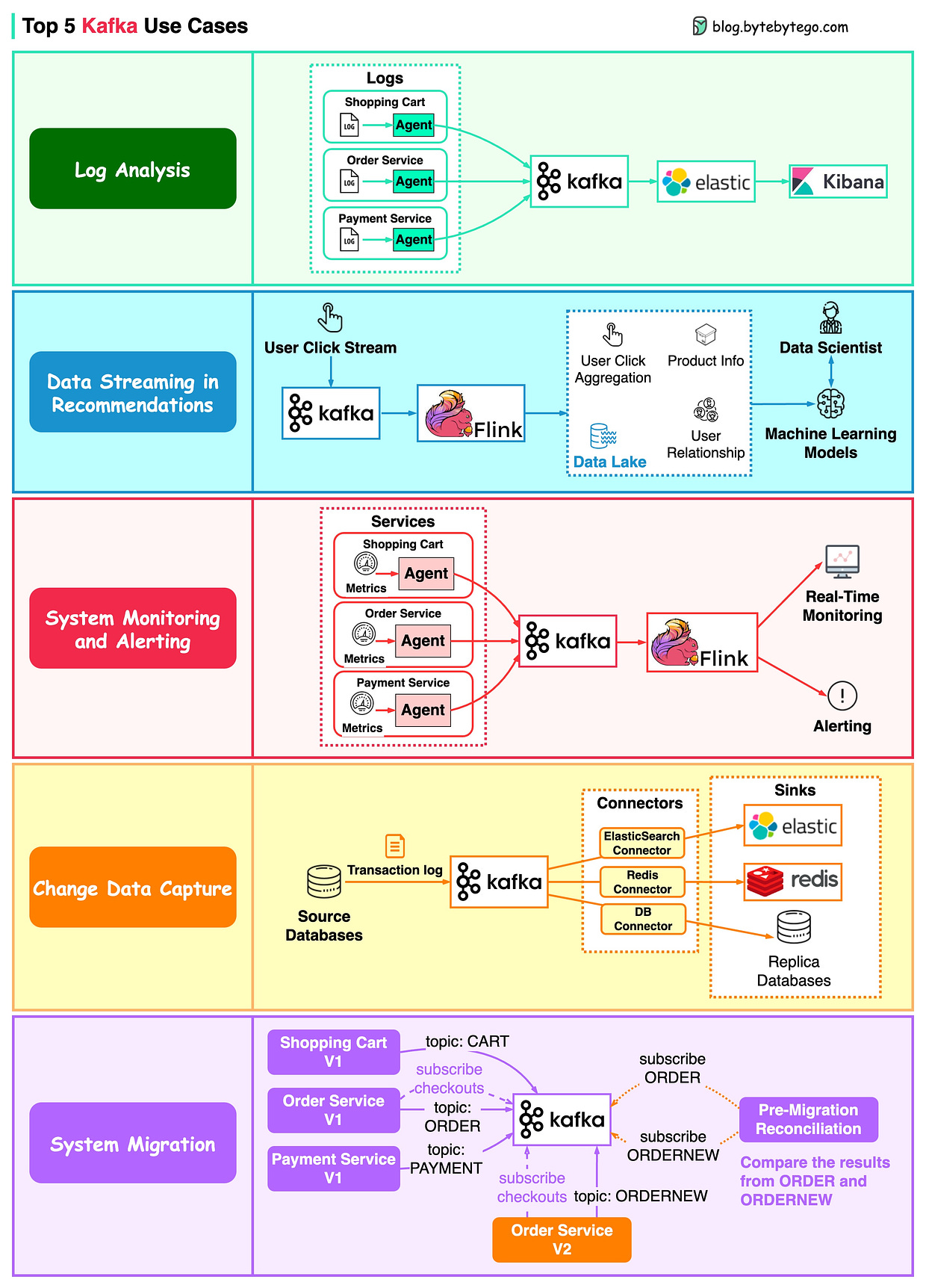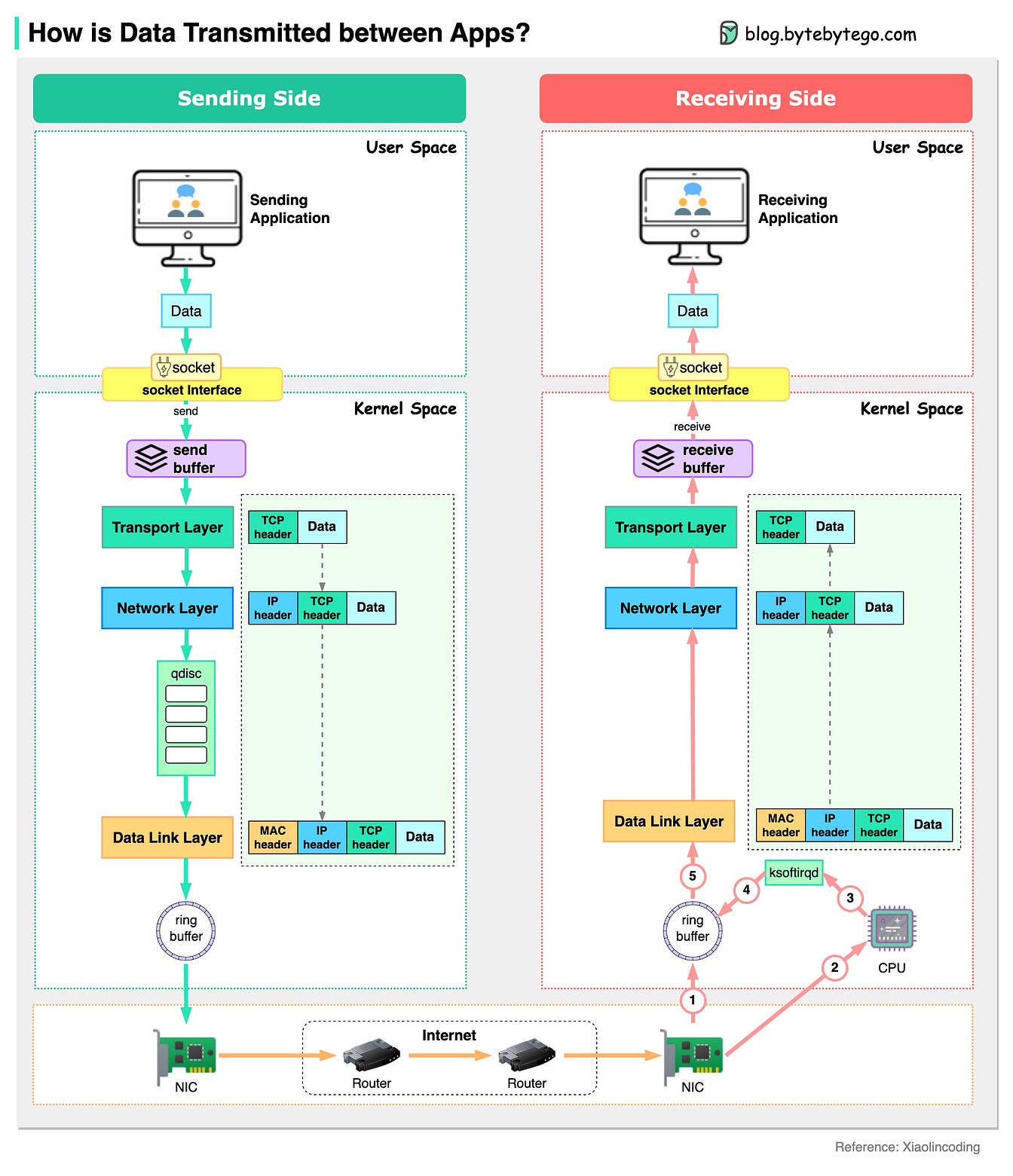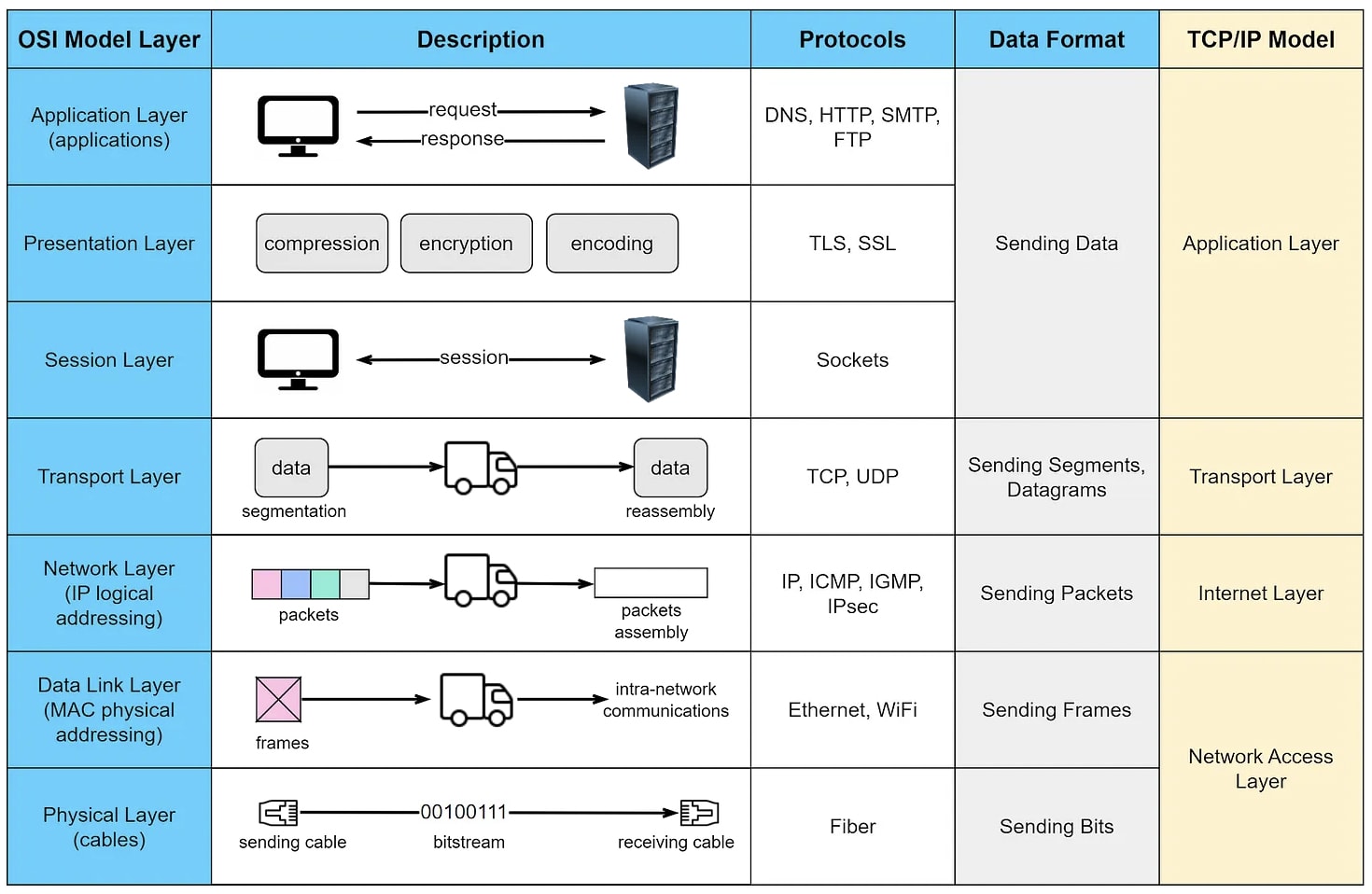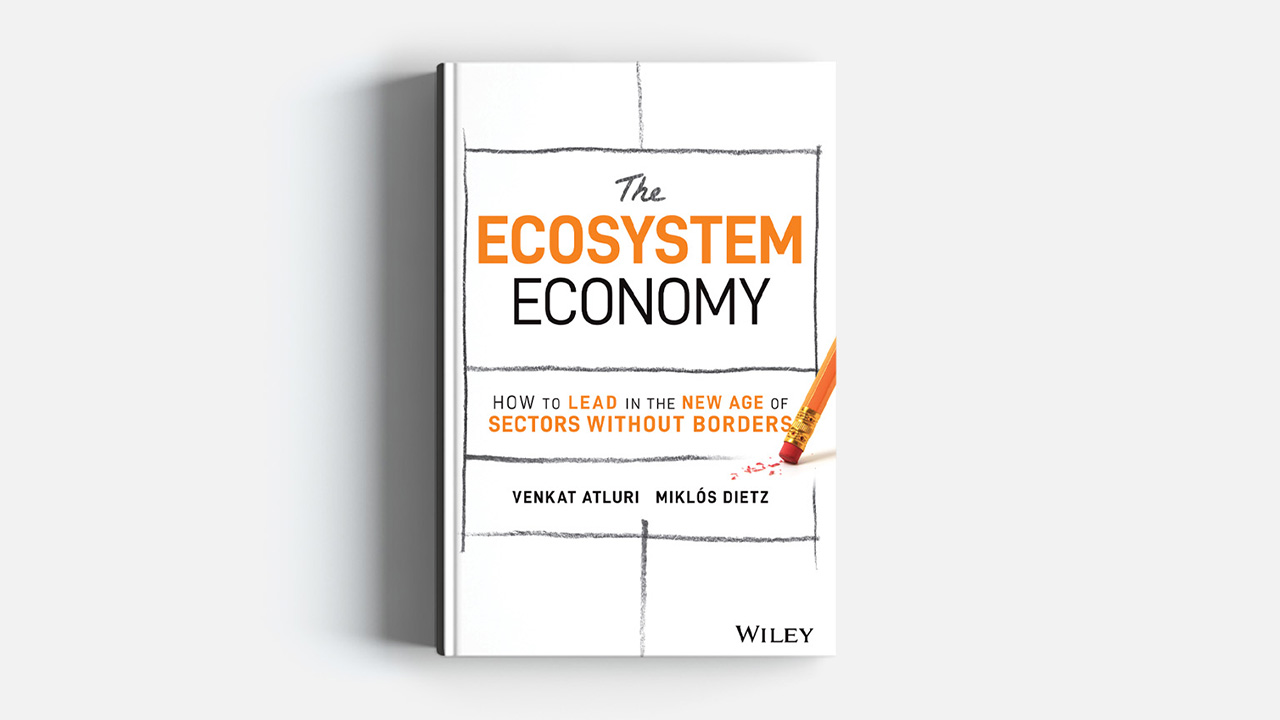Archives
- By thread 5341
-
By date
- June 2021 10
- July 2021 6
- August 2021 20
- September 2021 21
- October 2021 48
- November 2021 40
- December 2021 23
- January 2022 46
- February 2022 80
- March 2022 109
- April 2022 100
- May 2022 97
- June 2022 105
- July 2022 82
- August 2022 95
- September 2022 103
- October 2022 117
- November 2022 115
- December 2022 102
- January 2023 88
- February 2023 90
- March 2023 116
- April 2023 97
- May 2023 159
- June 2023 145
- July 2023 120
- August 2023 90
- September 2023 102
- October 2023 106
- November 2023 100
- December 2023 74
- January 2024 75
- February 2024 75
- March 2024 78
- April 2024 74
- May 2024 108
- June 2024 98
- July 2024 116
- August 2024 134
- September 2024 130
- October 2024 141
- November 2024 171
- December 2024 115
- January 2025 216
- February 2025 140
- March 2025 220
- April 2025 233
- May 2025 239
- June 2025 303
- July 2025 153
-
RE: Attendees list of The Business Show - TBS 2023
Hi,
Is there any update to my previous email
Please let me know your thoughts, so that i can get back to you with complete details
Waiting for your earliest response,
Regards,
Sophia Parker
From: sophia.parker1432@gmail.com <sophia.parker1432@gmail.com>
Sent: Tuesday, September 12, 2023 6:03 AM
To: info@learn.odoo.com
Subject: Attendees list of The Business Show - TBS 2023
Importance: HighDear Exhibitor,
Hope you’re doing well..!!
Would you be interested in getting Attendees list of The Business Show – TBS 2023.??
List includes: E-mails, contact number and other fields on an excel sheet.
We do charge for our services, would you like to see counts and pricing details available?
Looking forward for your email.
Regards,
Sophia Parker
Trade Show Specialist.
by sophia.parker1432@gmail.com - 05:54 - 13 Sep 2023 -
Shocks are inevitable. A dynamic risk management plan can help companies stay competitive.
On Point
Methods to manage risk
by "McKinsey On Point" <publishing@email.mckinsey.com> - 12:11 - 13 Sep 2023 -
Keep Your Transport Vehicles Safe and Efficient with Tire Pressure Monitoring Systems
Keep Your Transport Vehicles Safe and Efficient with Tire Pressure Monitoring Systems
Discover how TPMS transforms long-distance goods transportationSolutions with TPMS

Provided real-time tire pressure and temperature data.


Instant alerts for tire pressure and temperature deviations from preset thresholds.


Historical tire data for informed maintenance decisions.
.png?width=1100&upscale=true&name=Group%20350451687%20(1).png)
Results
%201-1.png)
Improved system reliability leads to reduced downtime.
%201-1.png)
Implementing the system results in lower fuel costs by contributing to better fuel efficiency.
%201-1.png)
Improper tire pressure reduces fuel efficiency.

Uffizio Technologies Pvt. Ltd., 4th Floor, Metropolis, Opp. S.T Workshop, Valsad, Gujarat, 396001, India
by "Sunny Thakur" <sunny.thakur@uffizio.com> - 08:00 - 12 Sep 2023 -
API Trends, Insights, Webinars, and More!
SmartBear
See our latest product updates and learn about what’s coming nextHi Abul,
We're back with our monthly API newsletter. Let's dive into this month's API trends, insights, webinars, and more!
 Hot Off the PressStoplight is Joining SmartBear!
Hot Off the PressStoplight is Joining SmartBear!
SmartBear has acquired Stoplight, a leader in API design and documentation
Stoplight supports three leading open source projects that we are excited to support in addition to our existing open source initiatives: Spectral, Prism, and Elements. Check out our blog to find out what’s coming next with this acquisition. API Innovative Insights
API Innovative Insights Become an expert on the latest updates and trends
Become an expert on the latest updates and trends
 Want to Learn More?
Want to Learn More?
Check out what else has been happening at SmartBear
WEBINARWhat’s New in SwaggerHubJoin our team as we take you through the latest features in SwaggerHub and demonstrate the advantages of integrating them into your toolkit WEBINARSupercharge Your Performance TestingOur experts delve into performance and load testing methodologies that can elevate your application's reliability, scalability, and overall user satisfaction
WEBINARSupercharge Your Performance TestingOur experts delve into performance and load testing methodologies that can elevate your application's reliability, scalability, and overall user satisfaction COMMUNITY EVENTCelebrating 10 Years of Pact OS2023 marks 10 years of Pact Open Source. To celebrate, during the month of October – which we’ve coined Pactober – we’re facilitating community events across the globe to celebrate and acknowledge the journey and look forward to the future of Pact
COMMUNITY EVENTCelebrating 10 Years of Pact OS2023 marks 10 years of Pact Open Source. To celebrate, during the month of October – which we’ve coined Pactober – we’re facilitating community events across the globe to celebrate and acknowledge the journey and look forward to the future of Pact BLOGDiscover, Test, and Succeed: SwaggerHub Explore Meets SwaggerHub PortalAPI documentation is the cornerstone of any successful API-driven project. We’re thrilled to introduce an exciting new enhancement to our SwaggerHub platform that’s set to take your API documentation to new heights
BLOGDiscover, Test, and Succeed: SwaggerHub Explore Meets SwaggerHub PortalAPI documentation is the cornerstone of any successful API-driven project. We’re thrilled to introduce an exciting new enhancement to our SwaggerHub platform that’s set to take your API documentation to new heights

Best,
SmartBear API Team
P.S. If you found this email helpful, forward it to a friend! If you have ideas of how we can improve next month’s newsletter, reply back to let us know.Have you tried our free API client, Explore? Sign up Today! This email was sent to info@learn.odoo.com by SmartBear Software, 450 Artisan Way, Somerville, MA. 02145, 617684.2600, www.smartbear.com. We hope you found this email of interest. However, we value your privacy. If you do not wish to receive future correspondence from us, please click here to manage email preferences.
This email was sent to info@learn.odoo.com by SmartBear Software, 450 Artisan Way, Somerville, MA. 02145, 617684.2600, www.smartbear.com. We hope you found this email of interest. However, we value your privacy. If you do not wish to receive future correspondence from us, please click here to manage email preferences.
by "SmartBear API Team" <api-lifecycle-team@smartbearmail.com> - 02:46 - 12 Sep 2023 -
FutureStack London is back!
New Relic
Our FutureStack user conference is coming to London on Tuesday 14th November and will feature inspiring customer presentations, exciting product updates, and multiple hands-on workshops.
Come and meet Grok, our industry-first new GenAI assistant and learn about what’s new and what’s next from New Relic with exciting announcements around logs, security, infrastructure, unified APM and the developer toolchain.
You’ll hear customer stories of observability excellence from engineering leaders at some of our biggest customers, and get to up-level your observability game with hands-on workshops for both new and advanced users.
So come tap into the expertise of our New Relic engineers while having a little fun to round off the day.
Register today and we look forward to seeing you in November!
Register here 
Need help? Let's get in touch.



This email is sent from an account used for sending messages only. Please do not reply to this email to contact us—we will not get your response.
This email was sent to info@learn.odoo.com Update your email preferences.
For information about our privacy practices, see our Privacy Policy.
Need to contact New Relic? You can chat or call us at +44 20 3859 9190.
Strand Bridge House, 138-142 Strand, London WC2R 1HH
© 2023 New Relic, Inc. All rights reserved. New Relic logo are trademarks of New Relic, Inc
Global unsubscribe page.
by "New Relic EMEA Events" <emeamarketing@newrelic.com> - 09:22 - 12 Sep 2023 -
Attendees list of The Business Show - TBS 2023
Dear Exhibitor,
Hope you’re doing well..!!
Would you be interested in getting Attendees list of The Business Show – TBS 2023.??
List includes: E-mails, contact number and other fields on an excel sheet.
We do charge for our services, would you like to see counts and pricing details available?
Looking forward for your email.
Regards,
Sophia Parker
Trade Show Specialist.
by sophia.parker1432@gmail.com - 06:03 - 12 Sep 2023 -
What would it take to empower Black, Latina, and Native American women in tech?
On Point
Nine practices could help retain women Brought to you by Liz Hilton Segel, chief client officer and managing partner, global industry practices, & Homayoun Hatami, managing partner, global client capabilities
•
Diversifying cybersecurity. In America, roughly three in ten cybersecurity jobs go unfilled due to a lack of workers, government data shows. As cyberattacks grow more frequent and costly, organizations are aiming to recruit more women and people of color to the field. Referring to internal diversity programs in job postings and only mentioning the required certifications and skills for a job can help companies recruit cybersecurity professionals more easily, the CEO of a cybersecurity education company says. [Axios]
•
Shrinking representation. Black, Latina, and Native American (BLNA) women in the US earned nearly double the number of computing degrees in 2021 as they did in 2016. Despite this, and even as employers invest significant time and resources in improving representation and inclusion in the workplace, BLNA women’s share of the technical workforce is shrinking. Between 2018 and 2022, BLNA women’s representation in tech roles declined from 4.6% to 4.1%, McKinsey senior partner Tiffany Burns and coauthors explain.
— Edited by Belinda Yu, editor, Atlanta
This email contains information about McKinsey's research, insights, services, or events. By opening our emails or clicking on links, you agree to our use of cookies and web tracking technology. For more information on how we use and protect your information, please review our privacy policy.
You received this email because you subscribed to the On Point newsletter.
Copyright © 2023 | McKinsey & Company, 3 World Trade Center, 175 Greenwich Street, New York, NY 10007
by "McKinsey On Point" <publishing@email.mckinsey.com> - 10:07 - 11 Sep 2023 -
สิทธิพิเศษ! รับการประเมินไซต์งานด้วย EcoConsult จาก ชไนเดอร์ อิเล็คทริค
Schneider Electric
EcoConsult สำหรับธุรกิจของคุณเพิ่มประสิทธิภาพการบำรุงรักษาสินทรัพย์ไฟฟ้าในไซต์งานเรียน คุณ Abul
ในฐานะที่ ชไนเดอร์ อิเล็คทริค เป็นส่วนหนึ่งของการร่วมผลักดันองค์กรและพาร์ทเนอร์ทั่วโลกเข้าสู่ Net Zero เราขอเสนอ การประเมินทรัพย์สินทางไฟฟ้าให้กับเจ้าของไซต์งานและผู้จัดการงานอาคารทั้งหมด โดยไม่มีข้อผูกมัดใดๆ
ปัจจุบันผู้จัดการงานอาคาร ต่างเผชิญกับความท้าทาย ในการรักษาสมดุลระหว่างการบำรุงรักษาไซต์งานให้ดำเนินการได้อย่างราบรื่น โดยใช้ทรัพยากรที่มีให้เกิดประสิทธิภาพสูงสุด ในขณะที่ต้องรับมือกับการบริหารลงทุนที่ต่างมีอยู่อย่างจำกัด เกี่ยวกับการจัดการโครงสร้างพื้นฐานและการเปลี่ยนถ่ายอุปกรณ์ไฟฟ้าต่างๆ
อย่างไรก็ตาม ท่านยังคงมีความจำเป็นในการบริหารไซต์งานให้ทำงานต่อไปด้วยทรัพยากรที่มีอยู่ สู่แนวทาง "Make do with what you have"โชคร้ายที่ข้อจำกัดและความเสี่ยงเหล่านี้มักทำให้ท่านอาจะพบกับตัน จนอาจทำให้การบริการจัดการไซต์งาน/อาคาร จนอาจเกิดความล้มเหลว
หากเกิดการหยุดทำงาน โดยไม่ได้วางแผนมีการวางแผนล่วงหน้า ทำให้ความรับผิดชอบทั้งหมดมักตกอยู่ที่ท่าน ผู้จัดการงานอาคาร! พร้อมแบกรับความผิดชอบและมองหาวิธีแก้ปัญหาตลอดเวลาการประเมินไซต์งาน EcoConsult ของ ชไนเดอร์ อิเล็คทริค เสนอการประเมินสินทรัพย์ทางไฟฟ้า เพื่อช่วยเหลือคุณในรูปแบบต่างๆ:- มองเห็นภาพรวมอุปกรณ์ที่ติดตั้ง: แสดงภาพรวมครอบคลุมอุปกรณ์ที่ใช้งานอยู่ในปัจจุบัน
- การตรวจจับอันตรายที่ใกล้เข้ามา: ระบุความเสี่ยงและอันตรายที่อาจคุกคามการทำงานของไซต์งาน
- รายละเอียดของอุปกรณ์: ดูรายละเอียดของอุปกรณ์เฉพาะที่มีการจัดแบ่งหมวดหมู่ต่างๆ
- การปรับปรุงแผนให้ทันสมัย: ปรับให้ทันสมัย ตามความสำคัญและความต้องการเฉพาะในแต่ละการติดตั้ง โดยมีวัตถุประสงค์ช่วยจัดการกลุ่มอุปกรณ์ที่ล้าสมัย
ข้อดีของรายงานการประเมิน:ดูรายละเอียดจากรายงานที่แนะนำโดยผู้เชี่ยวชาญเพื่อเตรียมความพร้อมที่ดีขึ้น:- วางแผนงบประมาณ: สามารถวางแผนการบริหารทรัพยากรและงบประมาณที่จำเป็นสำหรับการบำรุงรักษาและปรับปรุงไซต์งาน
- ใช้โปรโตคอลการบำรุงรักษา: ดำเนินการทางโปรโตคอลการบำรุงรักษาที่มีโครงสร้างดี ปรับให้เหมาะกับสถานที่การติดตั้ง
- การรีเฟรชอุปกรณ์และชิ้นส่วนอะไหล่: สำรวจและรับการเปลี่ยนถ่ายอุปกรณ์และชิ้นส่วนอะไหล่ที่จำเป็น อย่างมีกลยุทธ์ก่อนที่มันจะล้าสมัย
การตรวจสอบจะถูกดำเนินการอย่างไม่มีข้อผูกมัดใดๆ:ท่านสามารถวางใจและรับการให้คำแนะนำสำหรับไซต์งาน เพื่อประโยชน์อันสูงสุด การดำเนินการทั้งหมดจะไม่มีข้อผูกมัดและไม่ยึดติดกับแบรนด์ทั้งสิ้นสิทธิประโยชน์แก่ท่านในฐานะผู้จัดการไซต์งานและสถานที่ ในการรับคำปรึกษา ตลอดจนขอความคิดเห็นจากผู้เชี่ยวชาญตัวจริง!
ด้วยการดำเนินงานที่ครอบคลุมทั่วโลกในกว่า 100 ประเทศ เราพร้อมนำประสบการณ์อันเป็นประโยชน์มอบแก่ท่าน เพื่อช่วยให้ท่านทราบวิธีจัดการความต้องการ ในการบำรุงรักษาอุปกรณ์ไฟฟ้าและไซต์งานของคุณอย่างมีประสิทธิภาพ ทำให้เกิดประสิทธิผลมากที่สุด
หากท่านสนใจเพียงคลิกที่ปุ่ม 'ติดต่อเรา' และทีมงานของเราจะติดต่อกลับโดยเร็วขอแสดงความนับถือ,วราชัย จตุรสถาพรBusiness Vice PresidentField Services+ Lifecycle Services From energy and sustainability consulting to optimizing the life cycle of your assets, we have services to meet your business needs. Schneider Electric
46 Rungrojthanakul Building. 1st, 10th, 11th Floor, Ratchadapisek Road. Huaykwang
Bangkok - 10310, Thailand
Phone +662 617 5555© 2023 Schneider Electric. All Rights Reserved. Schneider Electric is a trademark and the property of Schneider Electric SE, its subsidiaries and affiliated companies. All other trademarks are the property of their respective owners.
by "Schneider Electric" <reply@se.com> - 10:02 - 11 Sep 2023 -
Some employees are destroying value. Others are building it. Do you know the difference?
Address the challenge Brought to you by Liz Hilton Segel, chief client officer and managing partner, global industry practices, & Homayoun Hatami, managing partner, global client capabilities
Employee disengagement and attrition could cost a median-size S&P 500 company more than $288 million a year in lost productivity, according to recent McKinsey research. The more satisfied and committed employees are at work, the higher their self-reported performance and well-being. With hybrid and remote-working models now the norm in many workplaces, how can companies measure employee effectiveness, and in turn, boost productivity? In a new McKinsey Quarterly article, Aaron De Smet, Angelika Reich, and their coauthors describe the six worker archetypes present in every organization—from highly dissatisfied and actively disengaged on one end of the spectrum to “thriving stars” on the other—and suggest what companies can do to help improve the performance of all employees. Check it out to see how your company can build a more resilient and engaged workforce. And don’t miss this week’s sustainable and inclusive growth briefing which features the best-of-summer roundup of SIG insights.
Quote of the day
Chart of the day
ALSO NEW
— Edited by Joyce Yoo, editor, New York
Share these insights
Did you enjoy this newsletter? Forward it to colleagues and friends so they can subscribe too. Was this issue forwarded to you? Sign up for it and sample our 40+ other free email subscriptions here.
This email contains information about McKinsey’s research, insights, services, or events. By opening our emails or clicking on links, you agree to our use of cookies and web tracking technology. For more information on how we use and protect your information, please review our privacy policy.
You received this email because you subscribed to our McKinsey Quarterly alert list.
Copyright © 2023 | McKinsey & Company, 3 World Trade Center, 175 Greenwich Street, New York, NY 10007
by "McKinsey Daily Read" <publishing@email.mckinsey.com> - 06:23 - 11 Sep 2023 -
Cybersecurity in the age of generative AI: A leader’s guide
Safety first Brought to you by Liz Hilton Segel, chief client officer and managing partner, global industry practices, & Homayoun Hatami, managing partner, global client capabilities
Cyber Awareness Month begins on October 1 in the United States, but it’s never too early for leaders anywhere to think about cybersecurity—especially now that generative AI (gen AI) has profoundly altered the online landscape. Businesses that are eager to take advantage of gen AI’s considerable benefits cannot ignore its increasing risks. Hallucinations, copyright infringement, and advanced social engineering and impersonation are just a few of the many threats that gen AI technology poses to organizations, most of which are already grappling with an ever-increasing number of cyberattacks. Here’s a quick look at what your organization should be prepared for.
It’s not often that a $2 trillion opportunity comes along. That’s the estimated worth of the market for cybersecurity products and services, according to new research led by McKinsey partner Marc Sorel and colleagues. “Currently available commercial solutions do not fully meet customer demands in terms of automation, pricing, services, and other capabilities,” they say. Only about 10 percent of the addressable market is served today; combined with increasing regulation and growing C-suite concerns about security and privacy, this gives both cybersecurity providers and buyers a compelling opportunity. “Until recently, many organizations that required cyber protection were not fully engaged with the challenges they faced,” say the McKinsey experts. “Often, they saw the cost and complexity of action as greater than the need for it. Now, with attacks becoming more frequent, the risk–benefit equation has changed.”
That’s the percentage of respondents to a McKinsey survey who rank cybersecurity as one of the top risks of gen AI adoption. Only 38 percent of organizations are working to mitigate the risk, however, down from 51 percent in 2022. Overall, respondents’ mitigation efforts lag behind their concerns; for example, 39 percent of organizations consider privacy a risk, but only 20 percent are making efforts to counter it. One way to allay risks is to “keep a human in the loop,” suggest McKinsey experts. “That is, make sure a real human checks any gen AI output before it’s published or used.”
That’s McKinsey’s Bryce Hall quoting “one of the most colorful analogies” on gen AI that he has heard from business leaders. “With the speed and advancements in technology, we don’t even know yet what type of electric fence to put into place,” adds McKinsey expert Liz Grennan. “We are seeing a lot of case studies about reputational damage, customer attrition, and erosion of market value, along with increased fines and regulatory scrutiny.” Leading companies that are developing or adopting gen AI solutions are pulling in legal and cyber risk experts from the start, and some global compliance standards may take effect next year. “The stage will be very crowded with both virtue and vice,” says Grennan. “One of next year’s tech trends could be the use of AI to combat the harms of AI because we can’t solve this with traditional means.”
A strong culture often contributes to the success of most corporate initiatives, and cybersecurity is no exception. Developer data platform company MongoDB discovered this when it implemented a security awareness program that encouraged employees to participate in protecting the organization. Roughly more than 100 of the firm’s employees—people from different ranks and locations and with varying levels of expertise—volunteer as “security champions” to test security-related tools, identify potential vulnerabilities, and provide feedback to the company’s security team. A clear win is when feedback from participants leads to a tool’s adoption, says Felix Chen, MongoDB’s cybersecurity education and advocacy senior analyst, in an interview with McKinsey’s James Kaplan and Charlie Lewis. “We ask them for a simple input. Even if it’s something that we don’t go with, the fact that we are asking creates a sense of inclusion and contribution.”
The Journey to Becoming Enlightened Is Arduous is not, as you might think, a serious work of philosophy—it’s one of many AI-generated fake books on online bestseller lists. And what looks like authentic medical insurance for sale may have a fake human peddling it. While some malicious applications of gen AI technology may be easy to spot, many can be convincing enough to spread political propaganda or distort historical fact. No protection method can be considered foolproof, but organizations that invest in the best talent and build cybersecurity into every process and relationship with customers and suppliers stand a better chance of warding off the newest generation of cyberthreats.
Lead securely.
— Edited by Rama Ramaswami, senior editor, New York
Share these insights
Did you enjoy this newsletter? Forward it to colleagues and friends so they can subscribe too. Was this issue forwarded to you? Sign up for it and sample our 40+ other free email subscriptions here.
This email contains information about McKinsey’s research, insights, services, or events. By opening our emails or clicking on links, you agree to our use of cookies and web tracking technology. For more information on how we use and protect your information, please review our privacy policy.
You received this email because you subscribed to the Leading Off newsletter.
Copyright © 2023 | McKinsey & Company, 3 World Trade Center, 175 Greenwich Street, New York, NY 10007
by "McKinsey Leading Off" <publishing@email.mckinsey.com> - 02:47 - 11 Sep 2023 -
We missed you at How To Build a Smart Queue Management System
We missed you at How To Build a Smart Queue Management System
Sorry you couldn’t make it (but you can stream it anytime)


How to Build a Smart Queue Management System
Watch on-demand 


We're sorry we missed you for our latest DevCon 2023 session How To Build a Smart Queue Management System Step by Step? From Zero to Hero, but not to worry, the on-demand replay is now available for you to watch anytime.
Watch to learn:
- Real-time detection and tracking of people for efficient queue management and staffing optimization
- Step-by-step easy-to-follow Jupyter Notebook tutorial
- Optimized for multi-model workloads across various Intel processors
- Where to find resources; open-source code, dataset, videos, and a blog available on GitHub for easy customization and extension to your specific needs
Watch now 
Don’t Stop There
- Watch tutorials, view use cases and see all the toolkit options at openvino.ai
- Download your free version of Intel® Distribution of OpenVINO™ toolkit and
- Explore the OpenVINO™ toolkit Github repository of Jupyter Notebooks, Training Extensions, Models, and more…
Missed other DevCon sessions? You can watch past workshops on demand as well.






If you forward this email, your contact information will appear in any auto-populated form connected to links in this email.
This was sent to info@learn.odoo.com because you are subscribed to Webinars. To view and manage your marketing-related email preferences with Intel, please click here.
© 2023 Intel Corporation
Intel Corporation, 2200 Mission College Blvd., M/S RNB4-145, Santa Clara, CA 95054 USA. www.intel.com
Privacy | Cookies | *Trademarks | Unsubscribe | Manage Preferences
by "Intel Developer Zone" <intel.developer.zone@plan.intel.com> - 12:31 - 11 Sep 2023 -
Generative AI has entered the mainstream. How widespread is it among workers?
On Point
Explore our latest survey Brought to you by Liz Hilton Segel, chief client officer and managing partner, global industry practices, & Homayoun Hatami, managing partner, global client capabilities
•
Career builder or breaker? A recent Pew survey finds that workers are split on whether to expect AI technologies to help or hurt their careers over the next 20 years. But IT and technology workers—who are the most exposed to AI—are much more optimistic. They are nearly three times more likely to expect AI to help than to hurt their careers. The Pew research also indicates that women’s roles, which are less likely to require physical labor, are more exposed to AI than men’s. [WaPo]
•
Genuine interest in gen AI. The latest McKinsey Global Survey on AI shows how quickly generative AI tools have caught on. One-third of survey respondents say their organizations are regularly using gen AI in at least one part of their business, and about eight in ten respondents across regions, industries, and seniority levels have at least tried out a gen AI tool. Three-quarters predict that gen AI will cause significant or disruptive change in their industries, and many expect their companies’ AI investments to increase because of advances with gen AI.
•
Expected effects on employees. Senior partners Alexander Sukharevsky, Alex Singla, Lareina Yee and coauthors find with this research that many organizations are not yet fully addressing the risks from gen AI adoption. For example, only 21% of respondents report that their organizations have established policies governing employees’ use of gen AI. Respondents expect gen AI adoption to change their companies’ workforce needs. See which business functions they predict will see the biggest changes and to what extent they expect workers to be reskilled.
— Edited by Heather Hanselman, editor, Atlanta
This email contains information about McKinsey's research, insights, services, or events. By opening our emails or clicking on links, you agree to our use of cookies and web tracking technology. For more information on how we use and protect your information, please review our privacy policy.
You received this email because you subscribed to the On Point newsletter.
Copyright © 2023 | McKinsey & Company, 3 World Trade Center, 175 Greenwich Street, New York, NY 10007
by "McKinsey On Point" <publishing@email.mckinsey.com> - 12:29 - 11 Sep 2023 -
Last chance to register | Leveraging Generative AI to power your Content Supply Chain
Adobe
Enhance your investment in AEM Assets with Adobe Firefly
Adobe Webinar
Leveraging Generative AI to power your Content Supply Chain
Tuesday, 12 September, 2023
11am SGTDream it, type it, see it with Firefly, our creative generative AI engine. Now in Photoshop (beta), Illustrator and on the web.
Firefly generative AI capabilities is embedded into other Adobe tools. In this webinar, get a head-start on GenAI with live demos and sharing on the following topics:- Introduction to Generative AI
- Empowering everyone and anyone to express creativity with Adobe Express and Firefly
- How Generative AI fits into your overall content management workflow to drive content at scale
- Enhancing your investment in AEM Assets with Adobe Express and Firefly
Register now
Speakers
 Nelson John
Nelson John
Principal Solution Consultant
Adobe See Wai Yip
See Wai Yip
Principal Solution Consultant
AdobeCreativity for all.Adobe and the Adobe logo are either registered trademarks or trademarks of Adobe in the United States and/or other countries. This is not a comprehensive list of all Adobe trademarks. For a full list, refer to the Adobe List of Trademarks. All other trademarks are the property of their respective owners.
By clicking on some of the links in this email, you might be redirected to forms that will be pre-populated with your contact information.
This is a marketing email from Adobe Systems Software Ireland Limited, 4‑6 Riverwalk, Citywest Business Park, Dublin 24, Ireland.
Click here to unsubscribe or send an unsubscribe request to the postal address above. Please review the Adobe Privacy Policy:
Australia
New Zealand
Indonesia
Malaysia
Philippines
Vietnam
Singapore
India
Hong Kong
To ensure email delivery, add demand@info.adobe.com to your address book, contacts, or safe sender list.
If you have a privacy-related complaint, send it to: privacy@adobe.com
View in browser
by "Adobe Creative Cloud for Business" <demand@info.adobe.com> - 09:02 - 10 Sep 2023 -
Meet the partners behind our biggest summer insights
Get to know the partners Brought to you by Liz Hilton Segel, chief client officer and managing partner, global industry practices, & Homayoun Hatami, managing partner, global client capabilities
New from McKinsey & Company
As summer in the Northern Hemisphere turns to fall, take a moment to get to know some of the partners behind the big articles that made a splash over the summer. These insights share a common theme of preparing for imminent changes in business and society, with generative AI’s promise and potential being one of the biggest topics on the minds of McKinsey leaders, including Sven Blumberg, Dana Maor, Alex Singla, Lareina Yee, Michael Chui, and Bryan Hancock. Get updated on the implications of generative AI, what lies ahead in real estate, economic growth opportunities in Africa, and the ten big shifts facing organizations today.

Lareina Yee
Lareina Yee is a senior partner in the San Francisco Bay Area office and writes and speaks on technology and diversity. She is the chair of the McKinsey Technology Council and also cofounded Women in the Workplace, an annual research partnership with LeanIn.Org, which reports on the state of women in corporate America year over year.
Featured article: What every CEO should know about generative AI

Bryan Hancock
Bryan Hancock is a partner in the Washington, DC, office and the global leader of McKinsey’s talent work. He has served a wide range of talent-intensive businesses, leading employers in sectors such as retail, transportation, logistics, healthcare, banking, asset management, and oil and gas. He is one of the authors of the recent book, Power to the Middle.
To see more essential reading on topics that matter, visit McKinsey Themes.
— Edited by Joyce Yoo, editor, New York
And for insights on issues that matter most to the CEO and their colleagues in the C-suite, sign up for The CEO Shortlist, formerly The Shortlist. We’ve changed the focus (and name) of this newsletter to signal our commitment to helping CEOs, present and future, do the best job they can. Rest assured it will continue to deliver, twice monthly, a shortlist of articles and reports that are must-reads regardless of role—from C-level execs to the frontline.
This email contains information about McKinsey's research, insights, services, or events. By opening our emails or clicking on links, you agree to our use of cookies and web tracking technology. For more information on how we use and protect your information, please review our privacy policy.
You received this email because you subscribed to our McKinsey Global Institute alert list.
Copyright © 2023 | McKinsey & Company, 3 World Trade Center, 175 Greenwich Street, New York, NY 10007
by "McKinsey & Company" <publishing@email.mckinsey.com> - 06:24 - 10 Sep 2023 -
The week in charts
The Week in Charts
Educational disparities, gen AI and jobs, and more Share these insights
Did you enjoy this newsletter? Forward it to colleagues and friends so they can subscribe too. Was this issue forwarded to you? Sign up for it and sample our 40+ other free email subscriptions here.
This email contains information about McKinsey's research, insights, services, or events. By opening our emails or clicking on links, you agree to our use of cookies and web tracking technology. For more information on how we use and protect your information, please review our privacy policy.
You received this email because you subscribed to The Week in Charts newsletter.
Copyright © 2023 | McKinsey & Company, 3 World Trade Center, 175 Greenwich Street, New York, NY 10007
by "McKinsey Week in Charts" <publishing@email.mckinsey.com> - 03:38 - 9 Sep 2023 -
EP76: Netflix's Tech Stack
EP76: Netflix's Tech Stack
This week’s system design refresher: System Design: Apache Kafka In 3 Minutes (Youtube video) Netflix's Tech Stack How Do C++, Java, Python Work? Top 5 Kafka use cases How is data transmitted between applications? An Unusual Request: Combating International Book Piracy on Amazon Forwarded this email? Subscribe here for moreThis week’s system design refresher:
System Design: Apache Kafka In 3 Minutes (Youtube video)
Netflix's Tech Stack
How Do C++, Java, Python Work?
Top 5 Kafka use cases
How is data transmitted between applications?
An Unusual Request: Combating International Book Piracy on Amazon
Engineering Metrics CEOs Love | A Free Presentation Deck
For too many engineering leaders, the most stressful part of their job isn’t a bug or a system crash. The thing they worry about most is having to step into a boardroom and make the case that their engineering team is positively impacting the broader company.
In this CEO-approved slide deck, you’ll find simple ways to communicate how your team is increasing engineering efficiency, all while delivering business results consistently.
From crystal-clear ways to illustrate how engineering resources match company priorities to how developers reduce the turnaround time on essential features, the CTO Board Deck is your secret weapon for owning any boardroom you enter.
System Design: Apache Kafka In 3 Minutes
Netflix's Tech Stack
This post is based on research from many Netflix engineering blogs and open-source projects. If you come across any inaccuracies, please feel free to inform us.
Mobile and web: Netflix has adopted Swift and Kotlin to build native mobile apps. For its web application, it uses React.
Frontend/server communication: GraphQL.
Backend services: Netflix relies on ZUUL, Eureka, the Spring Boot framework, and other technologies.
Databases: Netflix utilizes EV cache, Cassandra, CockroachDB, and other databases.
Messaging/streaming: Netflix employs Apache Kafka and Fink for messaging and streaming purposes.
Video storage: Netflix uses S3 and Open Connect for video storage.
Data processing: Netflix utilizes Flink and Spark for data processing, which is then visualized using Tableau. Redshift is used for processing structured data warehouse information.
CI/CD: Netflix employs various tools such as JIRA, Confluence, PagerDuty, Jenkins, Gradle, Chaos Monkey, Spinnaker, Altas, and more for CI/CD processes.Latest articles
If you’re not a subscriber, here’s what you missed this month.
How Do C++, Java, Python Work?
The diagram shows how the compilation and execution work.
Compiled languages are compiled into machine code by the compiler. The machine code can later be executed directly by the CPU. Examples: C, C++, Go.
A bytecode language like Java, compiles the source code into bytecode first, then the JVM executes the program. Sometimes JIT (Just-In-Time) compiler compiles the source code into machine code to speed up the execution. Examples: Java, C#
Interpreted languages are not compiled. They are interpreted by the interpreter during runtime. Examples: Python, Javascript, Ruby
Compiled languages in general run faster than interpreted languages.
Over to you: which type of language do you prefer?Top 5 Kafka use cases
Kafka was originally built for massive log processing. It retains messages until expiration and lets consumers pull messages at their own pace.
Unlike its predecessors, Kafka is more than a message queue, it is an open-source event streaming platform for various cases.
Let’s review the popular Kafka use cases.Log processing and analysis
The diagram below shows a typical ELK (Elastic-Logstash-Kibana) stack. Kafka efficiently collects log streams from each instance. ElasticSearch consumes the logs from Kafka and indexes them. Kibana provides a search and visualization UI on top of ElasticSearch.Data streaming in recommendations
E-commerce sites like Amazon use past behaviors and similar users to calculate product recommendations. The diagram below shows how the recommendation system works. Kafka streams the raw clickstream data, Flink processes it, and model training consumes the aggregated data from the data lake. This allows continuous improvement of the relevance of recommendations for each user.System monitoring and alerting
Similar to the log analysis system, we need to collect system metrics for monitoring and troubleshooting. The difference is that metrics are structured data while logs are unstructured text. Metrics data is sent to Kafka and aggregated in Flink. The aggregated data is consumed by a real-time monitoring dashboard and alerting system (for example, PagerDuty).CDC (Change data capture)
Change Data Capture (CDC) streams database changes to other systems for replication or cache/index updates. For example, in the diagram below, the transaction log is sent to Kafka and ingested by ElasticSearch, Redis, and secondary databases.System migration
Upgrading legacy services is challenging - old languages, complex logic, and lack of tests. We can mitigate the risk by leveraging a messaging middleware. In the diagram below, to upgrade the order service in the diagram below, we update the legacy order service to consume input from Kafka and write the result to ORDER topic. The new order service consumes the same input and writes the result to ORDERNEW topic. A reconciliation service compares ORDER and ORDERNEW. If they are identical, the new service passes testing.
Over to you: Do you have any other Kafka use cases to share?
How is data transmitted between applications?
The diagram below shows how a server sends data to another server.
Assume a chat application running in the user space sends out a chat message. The message is sent to the send buffer in the kernel space. The data then goes through the network stack and is wrapped with a TCP header, an IP header, and a MAC header. The data also goes through qdisc (Queueing Disciplines) for flow control. Then the data is sent to the NIC (Network Interface Card) via a ring buffer.
The data is sent to the internet via NIC. After many hops among routers and switches, the data arrives at the NIC of the receiving server.
The NIC of the receiving server puts the data in the ring buffer and sends a hard interrupt to the CPU. The CPU sends a soft interrupt so that ksoftirqd receives data from the ring buffer. Then the data is unwrapped through the data link layer, network layer and transport layer. Eventually, the data (chat message) is copied to the user space and reaches the chat application on the receiving side.
Over to you: What happens when the ring buffer is full? Will it lose packets?An Unusual Request: Combating International Book Piracy on Amazon
As many of you know, I publish my books on Amazon.
It is a great platform to do so. Amazon is where I direct people to find and buy my books. Unfortunately, there is an increasingly problematic piracy issue on the site for my books internationally, especially in India, which I am no longer able to solve by myself. The provided links direct to Amazon India, and ALL the books sold through those links are pirated.
More and more customers are getting low-quality, pirated books shipped to them. The smaller problem is that pirates get paid, and not me. The larger problem is that people get books that are unusable and unacceptable in quality, and leave 1-start reviews.
If you work at Amazon, can you please reply to this email, and help escalate this issue? I would like to keep promoting Amazon as a trusted source to purchase my books. But this issue needs to be resolved, and I'd need help from within the company. Thanks a lot in advance!
Latest articles
Here are the latest articles you may have missed:
To receive all the full articles and support ByteByteGo, consider subscribing:
Like
Comment
Restack
© 2023 ByteByteGo
548 Market Street PMB 72296, San Francisco, CA 94104
Unsubscribe
by "ByteByteGo" <bytebytego@substack.com> - 11:36 - 9 Sep 2023 -
What's on the agenda at the G20 Summit?
Poverty, climate change, geopolitical resilience, and more Brought to you by Liz Hilton Segel, chief client officer and managing partner, global industry practices, & Homayoun Hatami, managing partner, global client capabilities
New from McKinsey Global Institute
This weekend, leaders of the world’s largest economies will meet in New Delhi, India for the G20 Summit. With the theme “One Earth, One Family, One Future,” their goal will be to shape global economic policy for the year to come, incorporating discussions of sustainable growth. A new report from the McKinsey Global Institute dives into two key ambitions for the people and the planet: addressing poverty and climate change. When it comes to raising living standards and building a greener world, the actions taken (or not) in this decade will determine what kind of world the next generation will inherit, say Anu Madgavkar, Sven Smit, Mekala Krishnan, Jonathan Woetzel, Kweilin Ellingrud, and Tracy Francis. Read the report to understand the economics of addressing both poverty and climate change in a decisive way, and explore other recent insights on the global economy as the summit kicks off.
To see more essential reading on topics that matter, visit McKinsey Themes.
— Edited by Joy Merten, editor, Chicago
This email contains information about McKinsey's research, insights, services, or events. By opening our emails or clicking on links, you agree to our use of cookies and web tracking technology. For more information on how we use and protect your information, please review our privacy policy.
You received this email because you subscribed to our McKinsey Global Institute alert list.
Copyright © 2023 | McKinsey & Company, 3 World Trade Center, 175 Greenwich Street, New York, NY 10007
by "McKinsey & Company" <publishing@email.mckinsey.com> - 10:27 - 9 Sep 2023 -
2023 es el año clave de la IA generativa
Además, cómo los consejos de administración pueden ayudar a gestionar el riesgo geopolítico Según una encuesta reciente de McKinsey, un tercio de los encuestados dijeron que sus organizaciones utilizan la IA generativa (IAG) de forma habitual en al menos una función comercial, y el 40 por ciento señaló que sus organizaciones aumentarán su inversión en IAG. Sin duda, 2023 está demostrando ser un año decisivo para esta tecnología. A pesar de su incipiente disponibilidad pública, la IAG ya se está adoptando en todos los sectores, zonas geográficas y niveles jerárquicos en el mundo empresarial. En el artículo destacado de este mes, Michael Chui, Lareina Yee, Bryce Hall, Alex Singla y Alexander Sukharevsky, de McKinsey, comentan el crecimiento explosivo de la IAG, su potencial para transformar industrias y las conclusiones clave de la encuesta de McKinsey. Otros temas destacados de la edición de este mes son los siguientes:
•
El papel del consejo de administración en la gestión del riesgo geopolítico
•
Cómo los nuevos CEOs pueden aprovechar al máximo su primer año en el puesto
•
Cómo las empresas con mejores resultados logran un crecimiento consistente y rentable
•
Lo que depara el futuro a los líderes de estrategia en medio de la volatilidad actual y los mandatos cambiantes
La selección de nuestros editores
LOS DESTACADOS DE ESTE MES

Resiliencia geopolítica: El nuevo imperativo del consejo de administración
El riesgo geopolítico ocupa un lugar destacado en la agenda del CEO. Los miembros del consejo de administración pueden ayudar mejorando su comprensión del contexto siguiendo la evolución de la situación y supervisando los controles para mitigar estos riesgos.
Gestione las crisis futuras
Cómo tener un buen comienzo como CEO
Aproveche el primer año en el cargo como una oportunidad de renovación tanto personal como institucional.
Saque el máximo partido a su primer año
El triple play: Crecimiento, beneficio y sostenibilidad
El crecimiento de los ingresos es bueno. El crecimiento rentable es mejor. Pero un crecimiento rentable que promueva las prioridades ASG es aún superior. He aquí cómo las empresas con mejores resultados que optan activamente por el crecimiento consiguen la tripleta del crecimiento.
Invierta en crecimiento sostenible e inclusivo
La evolución del mandato del líder de estrategia
Los líderes de estrategia han asumido responsabilidades adicionales durante la última década en respuesta a la creciente volatilidad y los mandatos cambiantes.
Impulse el impacto
La habilitación de energía renovable con sistemas de almacenamiento de energía en baterías
El mercado de los sistemas de almacenamiento de energía en baterías está creciendo rápidamente. Estas son las preguntas clave para quienes quieren liderar el camino.
Abra camino
Por qué el camino hacia la riqueza y el crecimiento globales es importante para la estrategia
Hay cuatro escenarios plausibles sobre cómo podría desarrollarse la economía mundial en la próxima década. He aquí cómo las empresas pueden trazar un rumbo.
Conozca los 4 escenariosEsperamos que disfrute de los artículos en español que seleccionamos este mes y lo invitamos a explorar también los siguientes artículos en inglés.

McKinsey Explainers
Find direct answers to complex questions, backed by McKinsey’s expert insights.
Learn more
McKinsey Themes
Browse our essential reading on the topics that matter.
Get up to speed
McKinsey on Books
Explore this month’s best-selling business books prepared exclusively for McKinsey Publishing by Circana.
See the lists
McKinsey Chart of the Day
See our daily chart that helps explain a changing world—as we strive for sustainable, inclusive growth.
Dive in
McKinsey Classics
In the age of automation and AI, how can finance leaders ensure success? Read our 2018 classic “Bots, algorithms, and the future of the finance function” to learn more.
Rewind
Leading Off
Our Leading Off newsletter features revealing research and inspiring interviews to empower you—and those you lead.
Subscribe now— Edited by Joyce Yoo, editor, New York
COMPARTA ESTAS IDEAS
¿Disfrutó este boletín? Reenvíelo a colegas y amigos para que ellos también puedan suscribirse. ¿Se le remitió este articulo? Regístrese y pruebe nuestras más de 40 suscripciones gratuitas por correo electrónico aquí.
Este correo electrónico contiene información sobre la investigación , los conocimientos, los servicios o los eventos de McKinsey. Al abrir nuestros correos electrónicos o hacer clic en los enlaces, acepta nuestro uso de cookies y tecnología de seguimiento web. Para obtener más información sobre cómo usamos y protegemos su información, consulte nuestra política de privacidad.
Recibió este correo electrónico porque es un miembro registrado de nuestro boletín informativo Destacados.
Copyright © 2023 | McKinsey & Company, 3 World Trade Center, 175 Greenwich Street, New York, NY 10007
by "Destacados de McKinsey" <publishing@email.mckinsey.com> - 08:38 - 9 Sep 2023 -
Forward Thinking on funding a clean world with Ann Mettler
Prepare for change 
Forward Thinking on funding a clean world with Ann Mettler
Prepare for change Prefer audio? Listen to the podcast, and explore past episodes of the The Forward Thinking podcast. Subscribe via Google podcasts, Apple Podcasts, Spotify, or Amazon music.

From poverty to empowerment: Raising the bar for sustainable and inclusive growth

The net-zero transition: What it would cost, what it could bring
This email contains information about McKinsey's research, insights, services, or events. By opening our emails or clicking on links, you agree to our use of cookies and web tracking technology. For more information on how we use and protect your information, please review our privacy policy.
You received this email because you subscribed to our McKinsey Global Institute alert list.
Copyright © 2023 | McKinsey & Company, 3 World Trade Center, 175 Greenwich Street, New York, NY 10007
by "McKinsey Global Institute" <publishing@email.mckinsey.com> - 02:39 - 8 Sep 2023 -
The future of gen AI in 15 charts
The CEO Shortlist
Four new insights Curated by Liz Hilton Segel, chief client officer and managing partner, global industry practices, & Homayoun Hatami, managing partner, global client capabilities
The CEO role has never been easy: the boss is ultimately in charge of forming the company’s new strategies, then marshaling the resources to deliver on them. But what we’re hearing now from the world’s CEOs is that their role is harder than ever. Accordingly, we’re doubling down on our commitment to support them. Our CEO Excellence research is generating a steady stream of insights on how the best CEOs consistently deliver results. And other colleagues continue to surface the issues that matter most to CEOs and their teams in the C-suite. In line with that, we’ve changed the focus (and the name) of this newsletter to signal our commitment to helping CEOs—both present and future—do the best jobs they can. Rest assured, we will continue to deliver, twice monthly, four articles and reports that are must-reads for people across the workforce—from C-level execs to the front line. In this edition, we look at the future of generative AI, software developer productivity, and more. We hope you enjoy the read.
—Liz and Homayoun
All gen AI, all the time. It might feel like overload, but gen AI is just getting started. With so many current use cases—and hundreds, if not thousands, more on the horizon—knowing how to apply the technology to your business can seem daunting. To help, we’ve pulled together 15 of our most insightful charts, not only to offer ideas about where gen AI is headed, but also to help business leaders in a wide variety of industries put this tool to work, creating efficiencies and value.
Peer with us into the crystal ball with What’s the future of generative AI? An early view in 15 charts, a new visual McKinsey Explainer.Are you familiar with DORA and SPACE? If not, maybe you should be: they’re essential metrics that software developers use to measure productivity—something companies have historically struggled with. Our new approach combines these tools and others to shine a light on what can sometimes seem like a black box. As every company becomes a software company, shouldn’t you know what’s going on?
It’s true: Yes, you can measure software developer productivity, by Chandra Gnanasambandam, Martin Harrysson, Alharith Hussin, Jason Keovichit, and Shivam Srivastava. What do you call it when carmakers sell insurance, bankers sell furniture, accountants sell HR services, and a few superapps sell all the above and more? We call it the ecosystem economy. Senior partners Venkat Atluri and Miklós Dietz have documented a massive shift from industry sectors to customer-focused ecosystems and make the case that this might be the biggest economic reorganization in history. What will it mean for your company?
Read or listen to the latest episode of our Inside the Strategy Room podcast, Strategies to win in the new ecosystem economy, and order the book if you’d like to go deeper.Growing the top line is good. Growing the bottom line is better. And best of all is growth that accrues to the benefit of all stakeholders. Our new research finds that companies that are “triple outperformers”—meaning they grow faster and are more profitable than peers while also improving sustainability and ESG efforts—exceed their peers in shareholder returns.
Hit the trifecta with The triple play: Growth, profit, and sustainability, by Rebecca Doherty, Claudia Kampel, Anna Koivuniemi, Lucy Pérez, and Werner Rehm.We hope you find our new focus on CEOs inspiring and helpful. See you in two weeks with four more McKinsey ideas for the CEO and others in the C-suite.
Share these insights
This email contains information about McKinsey’s research, insights, services, or events. By opening our emails or clicking on links, you agree to our use of cookies and web tracking technology. For more information on how we use and protect your information, please review our privacy policy.
You received this email because you subscribed to The CEO Shortlist newsletter.
Copyright © 2023 | McKinsey & Company, 3 World Trade Center, 175 Greenwich Street, New York, NY 10007
by "McKinsey CEO Shortlist" <publishing@email.mckinsey.com> - 02:42 - 8 Sep 2023













































